Archive for September, 2009
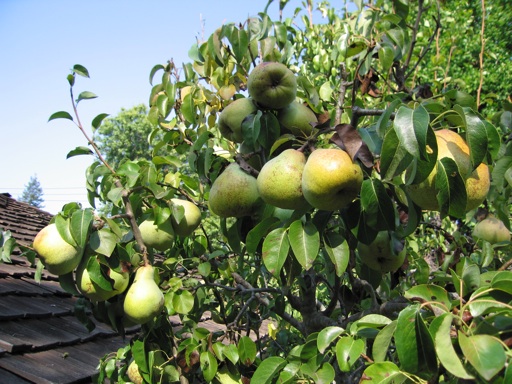
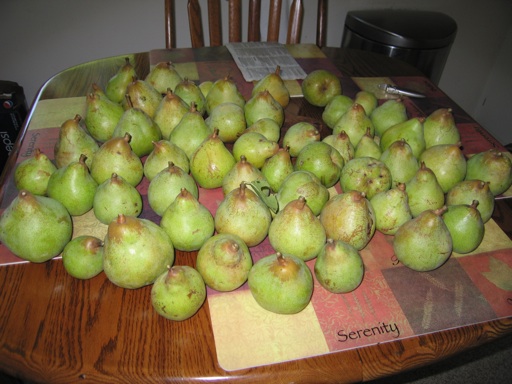
Yesterday, my mom and I harvested about 70 Comice pears from a small tree in my backyard. Our tree is crammed into a small space in between our house and a fence that is only about 6 or 7 feet away from the house and runs parallel to the house. The tree has grown upright in between the house and the fence. This tree was planted by the previous owners of the house. They didn’t pick the best spot, because the tree doesn’t have enough room to grow any wider. However, our Comice pear tree has managed to produce an abundance of pears nearly every year (except the years I didn’t net the tree). This is an example of how a fruit tree can be grown in a small space in a backyard and still produce high quality fruit.
In my opinion, Comice pears are the best tasting variety of pear. In fact, they are one of the best tasting fruits. The comice pears we have harvested from our tree taste even better than Bartlett pears. Our comice pears are very sweet. They are sweeter than Bartlett. Bartlett pears tend to have a bit of tartness, although I am a big fan of those pears as well. We also have a Bartlett pear tree.
Like all pears, Comice pears need to be picked while they are still unripe, and then ripened indoors. The worst thing about Comice pears is having to wait so long to eat them. Comice, Bosc, and D’Anjou pears need to be kept in a refrigerator for at least a month after harvest. After a month in cold storage, they can be brought to room temperature to ripen properly.
September 28 2009 | Pears | Comments Off on Comice Pear Harvest
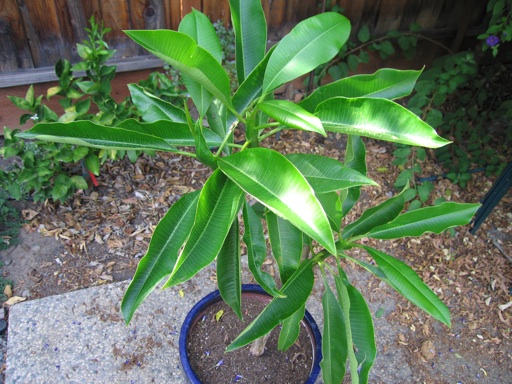
Last fall, I left our deciduous plumeria outdoors too long. I was hoping the cooler weather would naturally stimulate it into dropping its leaves. But when a frost hit in December, our plumeria not only dropped its leaves, but it got frost bitten badly. Many of its branches turned brown. I thought it might be dead.
But we kept it anyway to see if it would grow back. In the spring, I put it back outside, but it did not grow any leaves, and I stopped watering it in May. When it still had not grown any leaves by mid-June, I had decided to throw it away. Luckily, I didn’t get around to it, because in early July, it suddenly began to sprout new leaves. It has been growing vigorously since then. It now looks as good as it did prior to being frost bitten. It looks like another bloom is now a real possibility.
September 26 2009 | Plumeria | Comments Off on Plumeria is Back
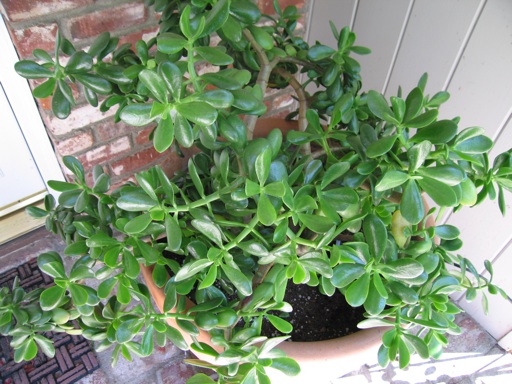
Several years ago, my mother gave me this jade plant. I planted it in the ground near our house, but it didn’t seem to like that location. It hadn’t grown for years, probably due to a lack of regular watering and insufficient sunlight. Last year, my partner and I transplanted our jade plant into a large clay pot, where it gets a regular watering from our micro-spray system. The pot is located under a porch where it gets about an hour or two of late afternoon sun.
It seems to be liking its new location. Our jade plant has grown significantly since we transplanted it into this pot. Its leaves are thick and have a deep green color. Although, our jade plant has yet to bloom for us. Jade plants are supposed to produce little star-shaped pink flowers.
Many of the jade plants I see growing in our area have pale green or even yellow leaves. I think the pale color is due to insufficient watering.
September 26 2009 | Jade | Comments Off on Jade Plant in Clay Pot
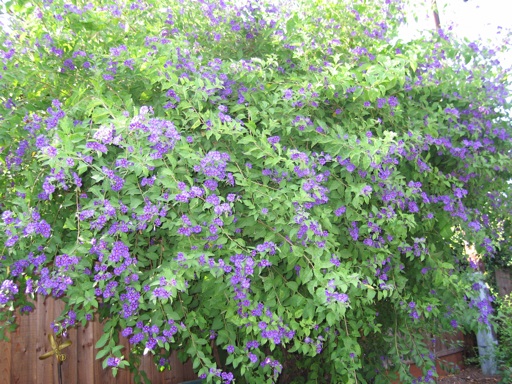
Potato vine solanum is a beautiful landscape bush. This is a recent photograph of our potato vine solanum bush. It needs more pruning than any other plant in our yard, because it grows numerous long spindly branches very quickly. Our solanum bush needs to be pruned about every two months during the growing season to keep it looking neat.
Right now, our bush is full of purple flowers, but it is huge and overgrown. I haven’t pruned it since June. When I do get around to pruning it, it usually takes me about 2 hours to prune it back into its original shape and then clean up the huge mass of branches.
September 20 2009 | Solanum | Comments Off on Potato Vine Solanum
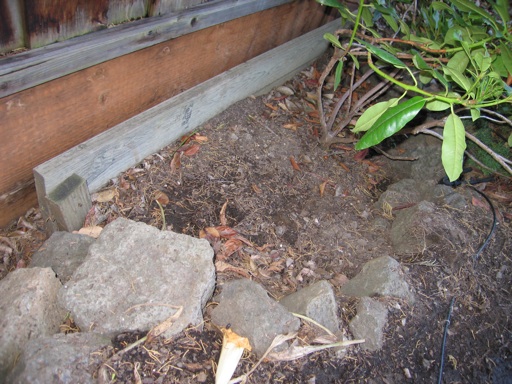
I came across this interesting article in a local publication recently. It discusses the use of wood treated with chromated copper arsenate (CCA) in garden beds. Wood is treated with chemicals such as CCA to kill microorganisms and insects that can cause the wood to decay. The article discussed the possibility that people who build their vegetable gardens using wood treated with CCA might end up consuming arsenic that leached into the soil from the wood.
In 2004, the Department of Soil, Water, and Climate at the University of Minnesota published a study of vegetables grown near wood that has been treated with CCA. In the study, the researchers discovered that plants grown within a few centimeters of CCA treated wood absorbed significantly greater concentrations of arsenic than plants grown several feet away from the wood. Although they concluded that based on U.S. Public Health Service standards these vegetables would be safe for human consumption, they also stated that some of the vegetable crops may not be safe for sustained consumption based on the US EPA’s standard.
In 2004, the Environmental Protection Agency (EPA) in a voluntary agreement with industry began restricting the use of CCA in treated timber in residential and commercial construction, with some exceptions.
However, just a few weeks ago, I discovered a piece of lumber in my yard (see above picture) that had a yellow tag stapled onto it. The lumber was placed around a raised bed near our fence by the previous owners of our house. The yellow tag indicated that the wood had been treated with CCA. I had a rosemary bush growing next to that piece of lumber for years. I also have two orange bushes growing about 6 feet away from it. Based on the results of the University of Minnesota study, I think that our oranges are far enough away from the treated lumber to have avoided absorbing much arsenic from it. But I have pulled up the rosemary bush, and I plan on removing the treated piece of lumber soon.
September 19 2009 | Vegetables | Comments Off on Arsenic in the Garden
Next »





